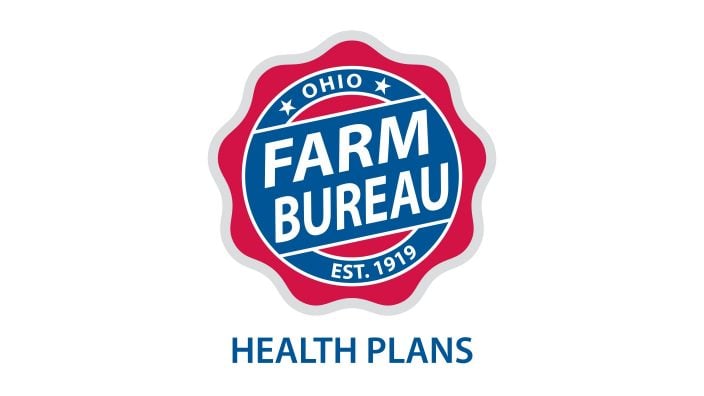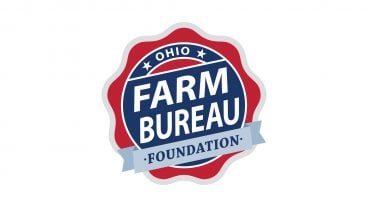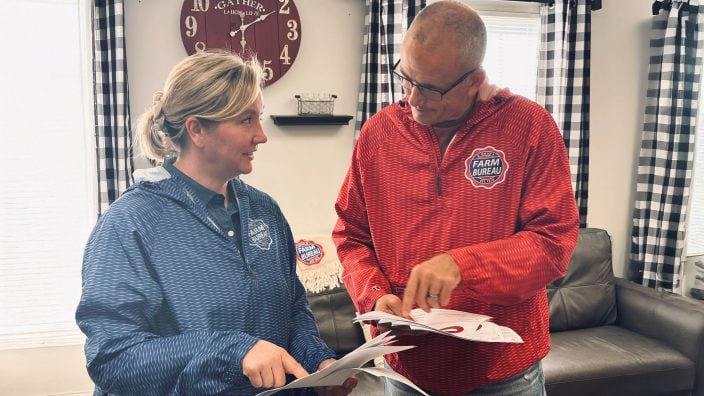Applications for Ohio Farm Bureau Health Plans now available
Members have three ways to apply: contacting a certified agent, calling 833-468-4280 or visiting ohiofarmbureauhealthplans.org.
Read MoreThe 24/17D intersection, which abuts the Wachtmans’ farmland, has been a dangerous place for a long time. It’s been an issue for so long that the couple has campaigned for more than 10 years for the county and the Ohio Department of Transportation to make it safer.
Sadly, Bill and Charlotte Wachtman can mark the time between traffic fatalities at the intersection of State Route 24 and County Road 17D in Henry County by the names of friends who’ve perished in wrecks there.

“There was a fatality just last week,” Charlotte said just a few days after the funeral of a friend in September. When the incident call came in over the scanner that an elderly person had been involved, local law enforcement called the Wachtmans to make sure they were OK.
“That’s how well they know (the danger),” Charlotte said.
According to the National Highway Traffic Safety Administration, in 2021, 20% of the U.S. population lived in rural areas but accounted for 32% of total vehicle miles traveled and 40% of traffic fatalities, with a fatality rate 1.5 times higher in rural areas than in urban areas.
In short, rural roads are dangerous. Topography, speed and longer response times by medical personnel are just a few of the reasons why. Safety in rural areas – whether it is moving farm equipment from one field to another or the installation of roundabouts as it relates to access for that same farm equipment – is always a priority issue for Farm Bureau. It is at the local, county Farm Bureau level where policy is developed and lobbied for when it comes to the safety of everyone who travels country roads.
The 24/17D intersection, which abuts the Wachtmans’ farmland, has been a dangerous place for a long time. It’s been an issue for so long that the couple has campaigned for more than 10 years for the county and the Ohio Department of Transportation to make it safer.
Traffic has tripled in recent years, the Wachtmans noted, as SR 24 expanded from two lanes to four running southwest to northeast from Defiance to Napoleon. County Road 17D is one lane each way north and south past the couple’s farm. Stop signs on 17D are the only way traffic is currently controlled. Semis hauling grain or other goods are often practically curled up in the center median to turn left or right on 24, and they barely fit even at that.
“People just avoid it,” Bill said, which compromises the small business district in Okolona, a small town just to the south of 24 on 17D. Bill said it can take 10 minutes of sitting just to try to cross safely.
Armed with a tri-fold display board and loads of data, the Wachtmans and neighbors made it a point to get in front of as many audiences as they could as injury accidents increased. Charlotte recalls an ODOT meeting years ago where she point-blank asked how many deaths it was going to take to get something done.
According to its project fact sheet, ODOT conducted a Safety Study in 2015, a Long Term Access Study in 2016, a Feasibility Study in 2021, and an Interchange Justification Study in 2022 for the intersection. Eighty-two percent of the crashes reported for the intersection between 2017 and 2019 involved serious injury, the fact sheet noted.
A decade ago, the Wachtmans started a petition and began going to more public meetings. Then Farm Bureau stepped in, changing everything, they said.
“We passed out flyers and did petition drives,” said Roy Norman, Ohio Farm Bureau senior organization director for Defiance, Fulton, Henry, and Williams counties. “Making improvements to that intersection has been a policy development priority issue for Henry County for years. We’ve talked about it at legislative meetings in our district as well as Ag Day at the Capital, at Farm Bureau meetings and at the Henry and Fulton County fairs.”
All the hard work paid off.
“Farm Bureau is what really got the word out,” Bill said. “It’s been one of their goals to get this done.”

ODOT announced that the project had the green light last year with a diamond interchange planned for the site. Construction is expected to begin in spring 2025 and take a year to complete at a cost of roughly $18 million.
“This intersection has a history of severe and fatal crashes. An interchange here has long been a high priority for the county commissioners and county engineer, along with other local individuals and entities,” said Ohio Department of Transportation District Two Deputy Director Pat McColley. “We are glad to be nearing construction on this promise to those who recognized the need for safety improvements in this corridor.”
Norman praises the Wachtmans for their perseverance, but with three sons and their families all using that intersection daily, it was a fight the couple committed to seeing come to fruition.
“I’ll believe it when I see it,” Charlotte said, determined to keep a watchful eye on the issue as it moves forward into the “fixing” phase.
Local policy development happens through the work of engaged members at the county Farm Bureau. All Farm Bureau policies proposed and adopted at the state and federal levels begin in a county.
To learn about becoming involved in policy development, contact your county Farm Bureau.


Members have three ways to apply: contacting a certified agent, calling 833-468-4280 or visiting ohiofarmbureauhealthplans.org.
Read More

The scholarship provides one renewable award of $10,000, supporting a student pursuing a degree in agriculture or an agriculture-related field.
Read More

A short conversation over the phone, a quick text message or even finding a small daily habit such as journaling can make a big difference.
Read More

One of the best decisions Shannon and Heather Utter made a few years ago was looking into a Farm Bureau member benefit that has ended up saving them thousands of dollars on their energy bills.
Read More

Ryan Hiser has experienced first-hand the importance of having the opportunity to vote on issues that will affect his family operation and other farmers.
Read More

Bill Patterson, Cy Prettyman and Adele Flynn will continue to serve as officers for Ohio Farm Bureau Federation.
Read More

Delegates discussed many topics impacting agriculture including farmland preservation, local foods, and succession planning.
Read More

Twenty-six farmers govern the state’s largest farm and food organization.
Read More

The 2025 recipients are Fred Cooke (posthumous) of Richland County, Marvin Dietsch of Williams County, Steven Knollman of Hamilton County and Michele Miller (posthumous) of Ottawa County.
Read More

Nathan and Jill Parriman grow seasonal crops, including Christmas trees, pumpkins and cut flowers, providing U-cut experiences that invite customers to engage directly with agriculture.
Read More